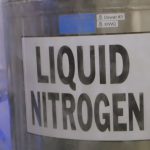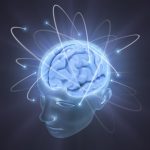What is a Connectome?
A connectome* is the complete map of the neural connections in a brain. It is sometimes referred to as a “wiring diagram” of the molecular connections between neurons, trading on the analogy of a brain to an electronic device, where axons and dendrites are wires and neuron bodies are components. Depending on the scientist, the term connectome may or may not also include learning-relevant molecular states at each synaptic connection (the “synaptome”) and any learning-relevant changes in the nucleus of each neuron (the “epigenome”). At the level of whole brains, there can be fly connectomes, mouse connectomes, human connectomes, whale connectomes, and so on. We can also speak of connectomes of specific brain subsystems, such as hippocampal connectomes, thalamic connectomes, and cortical connectomes.
To date, the only organism for which we have a complete connectome is a version of the roundworm C. elegans, a one and a half millimeter organism with a neural network of three hundred neurons and some seven thousand synaptic connections. We do not presently have complete synaptome or epigenome maps for C. elegans, or full knowledge of what these maps should contain. Construction of the C. elegans connectome took a dozen years of tedious scientific manpower; every neuron was individually identified, its precise location determined, and its projections to other neurons traced and catalogued. Remarkably, the only tool available to perform this work was manual visual recognition and discrimination; individual scientists had to follow the worm’s neuronal pathways with their own eyes, tracking their convoluted paths through endless microscopic images.
A human brain has one hundred billion neurons and some seven hundred trillion synaptic connections, a breathtakingly intricate structure that is roughly eleven orders of magnitude more complex in its connectivity than C. elegans. Building a complete human connectome is inconceivable with existing technology, for two reasons. First, while modern electron microscopes are powerful enough to image nano-scale features of the human brain, there aren’t enough electron microscopes currently in existence to make imaging the comparatively vast volume of tissue in a human brain remotely feasible. Second, the work of interpreting these images and tracing the projections emanating from each neuron is still done by humans clicking through images in real time.
Building and interpreting even a single human connectome will require legions of dedicated electron microscopes, along with artificial intelligence that can shoulder the burden of visually tracing neuronal projections and recognizing and cataloguing synapses. These are serious challenges that require will and ingenuity, but they are not impossibilities. In fact, electron microscopy is exponentially improving and declining in cost, with ever faster, more powerful prototypes on the horizon. Solid-state microscopes costing one fifth current microscopes are in development, and massively parallel microscopes with a few hundred beams per system have been created, each capable of two orders of magnitude more imaging and tissue throughput than current models. At the same time, the use of artificial intelligence for sophisticated visual discrimination and circuit tracing is being pursued in many labs throughout the world. There are many reasons for optimism.
Why build a human connectome?
Scientists have long suspected that features of human mental behaviour – from general abilities like intelligence to afflictions like depression and schizophrenia – correlate to specific features of the brain. However, to date they have lacked the precision tools necessary to fully investigate these hypotheses. Once equipped with the ability to construct human connectomes, scientists will be able to effectively address fundamental questions about how human brain physiology correlates to abilities and behaviours. Comparing the wiring diagrams of different human brains will reveal much about the mechanisms underlying both mental exceptionality and pathology. This may in turn lead to the development of advanced and targeted treatments, like better designer drugs, precise surgical interventions, and custom neural prostheses.
There is an even more remarkable reason to construct human connectomes. Many neuroscientists today believe that memories are stored primarily in the synapses between neurons, and to a more limited degree in nuclear changes in the cell bodies of each neuron. They hypothesize that new memories are formed when these synapses are strengthened and weakened, and when new synapses form between neurons. To date this theory has been difficult to test, but as the field of connectomics matures, scientists will finally be able to investigate the neural underpinnings of memory storage and retrieval. The Brain Preservation Foundation aims both to facilitate the achievement of these technologies and prepare for their arrival by developing the technical means to preserve brains so that their connectomes, synaptomes, and (if necessary) epigenomes are retained and recoverable.
And that’s just the beginning. From there, it may even become possible to recover the memories encoded in connectomes. And if we can do it for memories, we can likely do it for most any mental characteristic of the individual from whom a connectome is constructed. Even the individual as a whole might be recoverable from their connectome and its relevant molecular features.**
We at BPF also want to put the question to you: What might all of this mean? We have some ideas, and we’d like to hear yours as well. It’s difficult to anticipate the impact that widely available, inexpensive connectome creation, storage, and retrieval technologies might have on human culture. We feel it is important to have these discussions now, and we hope you find this project worthy of your support.
Footnotes
* Although the National Institutes of Health’s Human Connectome Project uses the term “connectome” in its title, its currently funded brain mapping technology consists of Diffusion MRI, a technology whose resolution is many orders of magnitude too coarse to trace individual neural connections. It is useful for tracing gross fiber bundles connecting large brain regions. A more appropriate title for the current NIH project might have been the Human Projectome Project, a ‘projection’ being the traditional name neuroscientists give for such gross level connectivity between brain regions.
A discussion one of us (K.H.) had with one of the project’s directors made clear that one reason the title Connectome was chosen instead was to signal a long-term commitment by the NIH to the eventual goal of obtaining a true human connectome at the level of individual synapses. The technology needed to automatically map neural circuits exists today, but only for tissue volumes smaller than a cubic millimeter. This technology is currently being pushed to ever greater volumes by groups like Harvard University’s Connectome Project and the Max Planck Institute for Medical Research in Heidelberg. As this exciting technology matures, the intention is to apply it to a whole human brain.
We applaud the NIH’s implied commitment to the long-term goal of obtaining a real human connectome, and note that brain preservation technology is an absolute prerequisite to its success, a prerequisite that unfortunately is receiving no targeted NIH funding currently. It should be clear that in order to apply the nano-resolution scanning technologies being developed to a whole human brain, a technique must first be developed to preserve a whole human brain at the ultrastructure level by chemical perfusion and plastic embedding. This is exactly what is called for by our Brain Preservation Technology Prize.
** In the types of electron microscopy neuroscientists commonly use (FIBSEM, etc.), preserved neural tissue can be visualized down to about a 6 nanometer resolution. This allows them to directly see each neuron’s synapses and dendrites (connections to other neurons). This level of detail also includes the ability to image, directly and indirectly (via molecular probes), many elements of the “synaptome,” the number and types of special proteins (vesicles, signaling proteins, cytoskeleton), receptors (Glutamate, etc.), and neurotransmitters (at least six types in human neurons) that are known to be involved in long-term learning and memory at each synapse in the brain, and elements of the “epigenome” (learning-based DNA methylation and histone modifications) in the nucleus of each neuron. It remains an open question in neuroscience exactly which features of the synaptome and epigenome need to be preserved to retain memory and identity in each species. We know simpler connectomes, synaptomes, and epigenomes are used in organisms with simpler memories (C. elegans, Drosophila, Aplysia, etc.), and that the vast majority of neural molecules are not involved in learning and memory, but support other cell functions necessary for life. Chemical fixation and cryonics both preserve the fats, proteins, sugars, and DNA in living neurons, and fix them effectively in place, and relevant membrane receptors stay in their normal distributions as well, as verified by antibody probes. What we don’t know yet is if this happens reliably everywhere during whole brain chemical and cryonic preservation. We also don’t know the full complement of small molecules and cytoskeletal features in our neurons and glia that are necessary to memory and identity, and which molecular signal states (eg., phosphorylation, methylation) are important. But our knowledge of the molecular basis of learning and memory continues to rapidly grow, aided by exciting new neuroscience techniques (optogenetics, viral tagging, protein microarrays, etc.). Our ability to scan and verify is also rapidly improving. New types of electron microscopy, such as Cryo-TEM, can image at an amazing 3 angstrom resolution, 50 times greater magnification than FIBSEM, a scale where brain proteins and even individual atoms can be directly seen.
Our current Brain Preservation Technology Prize is focused on the connectome, imaged at FIBSEM resolution. As neuroscience advances, we may learn that certain features of the synaptome and epigenome not presently observable by FIBSEM must also be preserved. In that case, the Brain Preservation Foundation will offer additional Technology prizes, and make use of other verification methods and even higher resolution imaging if necessary. Bottom line: As neuroscience continues to advance, BPF will do our best to help science to determine whether reliable and affordable protocols can be found to preserve those brain structures that give rise to our memories and identities, according to our best evidence to date.





